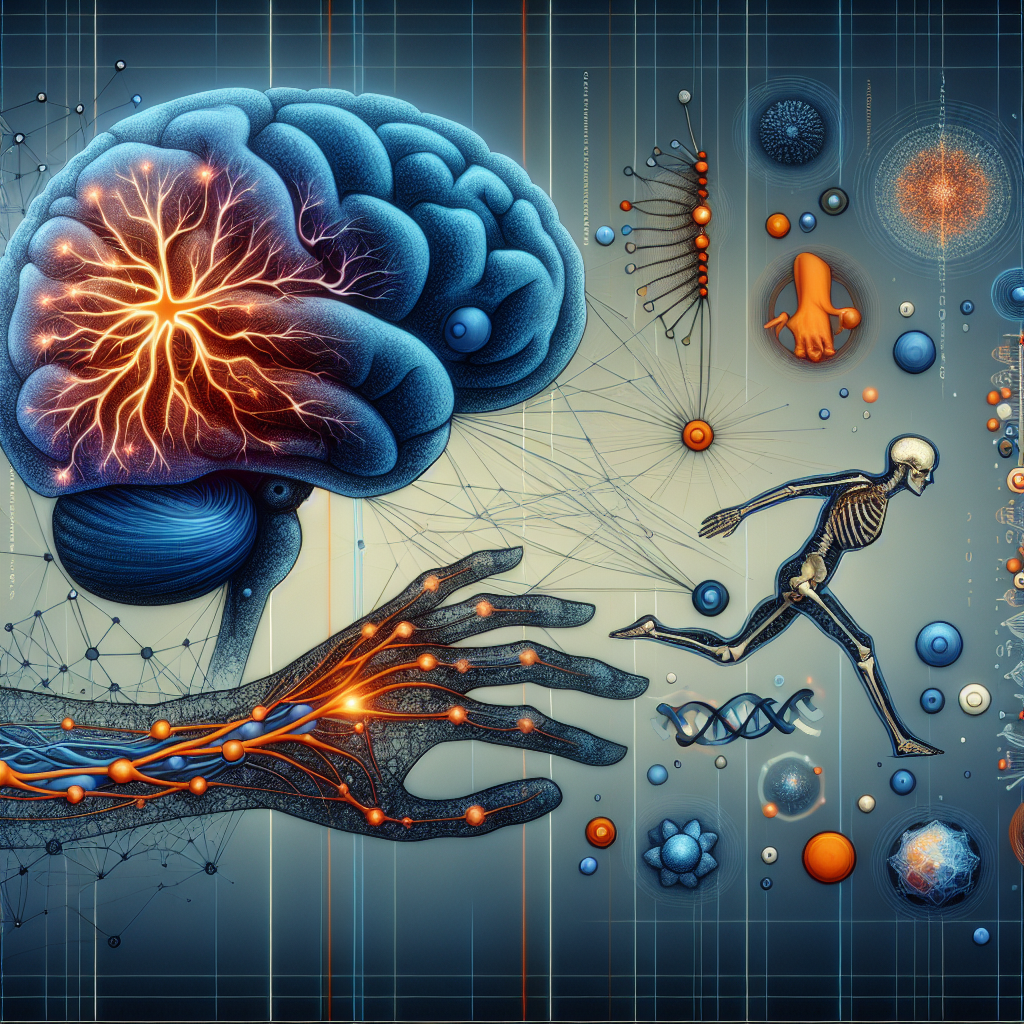
Introduction
Imagine effortlessly catching a baseball, dancing with rhythm, or executing a flawless yoga pose. These actions may seem automatic, yet they illustrate a complex dance of coordination involving both mind and body. Welcome to the fascinating realm of sensorimotor control, where understanding the brain-body connection can transform how we interact with the world. From athletes aiming for peak performance to therapists looking to improve patients’ rehabilitation, decoding sensorimotor control is essential for unlocking human potential. In this article, we will delve deep into the mechanics of this intricate relationship, exploring case studies, practical applications, and groundbreaking research that illuminate the path ahead.
What is Sensorimotor Control?
At its core, sensorimotor control refers to the processes through which the brain interprets sensory information and translates it into motor actions. This involves a continuous feedback loop where sensory inputs from the environment inform motor outputs, allowing for fluid movements and adaptive responses.
The Components of Sensorimotor Control
Sensory Input
- Visual Processing: The brain uses visual cues to guide movements. A study highlighted how professional athletes sharpen their visual acuity to enhance performance.
- Proprioception: This awareness of body positioning is crucial for balance. It allows individuals to make adjustments without directly looking at their limbs.
- Tactile Feedback: Touch plays a critical role in refining motor actions, especially in activities requiring fine motor skills.
Motor Output
- Cortex Involvement: The motor cortex is responsible for planning and executing movements.
- Cerebellum Role: This area fine-tunes motor commands, ensuring precision and coordination.
- Spinal Reflexes: These automatic responses enable immediate reactions without the need for conscious thought, vital for activities such as catching or dodging.
The Brain-Body Connection
The brain-body connection is a symbiotic relationship that forms the basis for sensorimotor control. Through neural pathways, the brain receives sensory inputs and executes appropriate motor responses. Research has shown that disruptions in this connection can result in impairments, emphasizing the importance of a healthy, functioning sensorimotor system.
Real-World Applications of Sensorimotor Control
Case Study 1: Athletes and Performance Optimization
Elite athletes rely heavily on sophisticated sensorimotor control to optimize performance. A landmark study involving Olympic sprinters showed that those who engaged in targeted training to enhance their proprioceptive skills significantly improved their reaction times and agility.
- Analysis: This case underscores how enhancing sensory inputs can lead to better motor outputs, establishing a vital link between training protocols and performance.
Case Study 2: Rehabilitation Following Injury
A 2018 study showcased the effectiveness of sensorimotor rehabilitation techniques for stroke patients. By focusing on activities that integrated sensory feedback with motor tasks, patients regained significant mobility and coordination.
- Analysis: This exemplifies the practical application of understanding sensorimotor control in therapeutic settings, revealing how targeted interventions can accelerate recovery.
Case Study 3: Robotics and Human Interaction
Innovations in robotics have attempted to mimic human sensorimotor control. Research on prosthetic limbs with integrated sensory feedback systems demonstrated that users experienced more fluid and natural movements, akin to their biological counterparts.
- Analysis: This case highlights future possibilities for integrating sensorimotor principles into technology, enhancing human experiences and capabilities.
Table 1: Key Differences in Sensorimotor Training for Different Populations
| Population | Focus Area | Training Methodologies |
|---|---|---|
| Athletes | Performance Optimization | Proprioceptive drills, reaction time tasks |
| Stroke Patients | Rehabilitation | Task-oriented training, adaptive exercises |
| Robotics | Emulating Natural Movement | Artificial sensory feedback integration |
The Science Behind Sensorimotor Control
Numerous studies have explored how the brain orchestrates sensorimotor actions, focusing on neural networks responsible for integrating sensory information. Techniques such as functional MRI (fMRI) have allowed researchers to visualize brain activity in real time, revealing intricate networks activated during movement.
Neuroplasticity and Sensorimotor Control
Neuroplasticity—the brain’s ability to reorganize itself by forming new neural connections—plays a crucial role in recovery and skill acquisition. Training specifically designed to enhance sensorimotor control can lead to structural changes in the brain, bolstering the brain-body connection.
Enhancing Sensorimotor Control
Practical Strategies for Improvement
Mindfulness and Body Awareness
Practicing mindfulness exercises enhances proprioceptive skills and improves awareness of one’s body in space.
Skill-Specific Training
Focusing on drills that emphasize specific skills—like catching, throwing, or balancing—creates targeted sensory feedback loops, enhancing overall performance.
Cross-Disciplinary Approaches
Integrating principles from disciplines like dance, martial arts, or physical therapy can yield comprehensive improvements in sensorimotor control.
Conclusion
Decoding sensorimotor control is not merely an academic endeavor; it holds the key to optimizing human performance across various fields. By understanding the interactions between sensory inputs and motor outputs, we can apply this knowledge to enhance athletic performance, rehabilitate injuries, and innovate in technology. The journey toward mastering the brain-body connection is as much about understanding our current capabilities as it is about envisioning what’s possible. As we continue to explore and refine our understanding of sensorimotor control, we empower ourselves and others to reach their ultimate potential.
FAQs
1. What is the role of proprioception in sensorimotor control?
Proprioception allows the brain to understand the position and movement of the body, enabling coordinated movements and balance. It is essential for activities ranging from athletics to daily living.
2. Can sensorimotor control be improved through training?
Yes, targeted training that emphasizes sensory feedback and motor tasks can significantly enhance sensorimotor control.
3. How does injury affect sensorimotor control?
Injuries can disrupt the brain-body connection, leading to impaired movements and coordination. Rehabilitation focusing on sensorimotor retraining can help recover these functions.
4. What technologies are emerging in the field of sensorimotor control?
Innovations like sensory feedback in prosthetics and virtual reality environments are enhancing understanding and training of sensorimotor skills.
5. How does mindfulness affect sensorimotor control?
Mindfulness practices can improve body awareness and proprioceptive skills, which are crucial for effective sensorimotor control.
Understanding the intricacies of decoding sensorimotor control not only enriches our grasp of human motion but also cements its significance across various domains. The knowledge we gain today becomes the catalyst for transforming practices tomorrow, creating a ripple effect that enhances lives and fosters innovation.
















